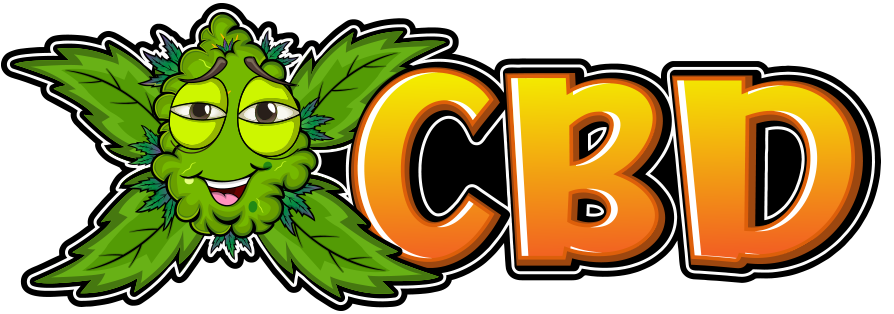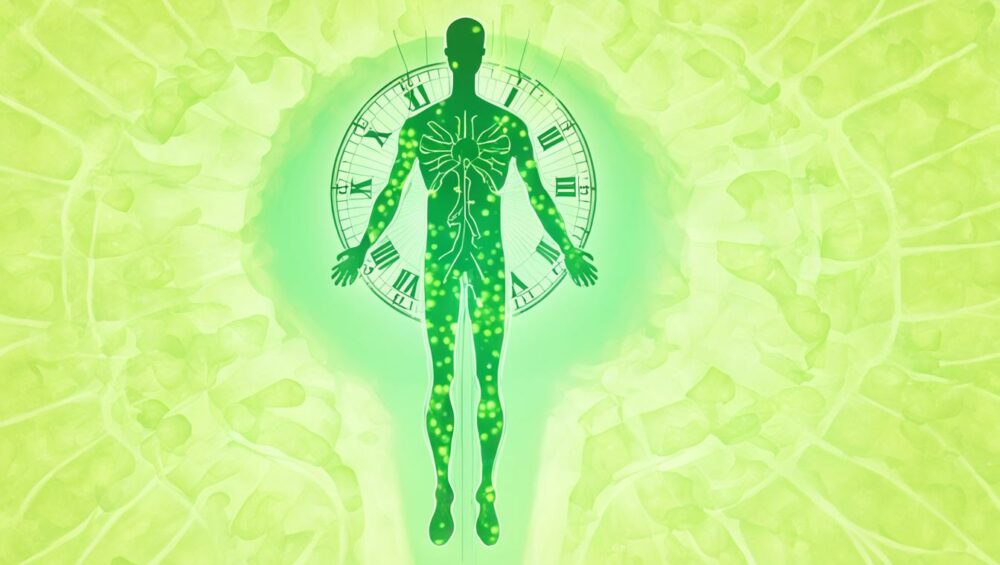Welcome to our informative article on CBD flower and its detectability in urine. If you’re curious about how long CBD flower stays in urine or concerned about potential drug tests, you’ve come to the right place. CBD flower has gained immense popularity among individuals seeking the potential health benefits of CBD without the intoxicating effects of THC. Understanding the duration of CBD detectability in urine is essential, particularly for those who may undergo drug testing.
When it comes to CBD flower and urine traceability, various factors come into play. The method of consumption, frequency of use, and individual metabolism can all influence the length of time CBD can be detected in urine. In this article, we will dive deeper into these factors and provide you with the information you need to make informed decisions.
Stay tuned as we explore the absorption rate of CBD in urine, the impact of different consumption methods, and the presence of THC in CBD flower. Furthermore, we will discuss the different types of drug tests and their capabilities in detecting CBD and THC. We’ll conclude by offering tips on how to ensure THC-free CBD products for drug tests and the individual factors that influence CBD clearance from the body.
If you’re ready to become an expert on CBD flower trace duration in urine, keep reading. We have all the valuable insights you need to make informed choices regarding CBD consumption and drug testing.
Factors Affecting CBD Absorption and Duration in Urine
The method of consumption plays a significant role in determining how quickly CBD is absorbed into the bloodstream and how long it remains in the body. Sublingual consumption, where CBD oil is administered under the tongue, allows for rapid absorption and a shorter duration of CBD in urine. Edible consumption, such as CBD gummies or capsules, leads to slower absorption and a longer duration of CBD detectability in urine. Inhalation, through smoking or vaping CBD, provides immediate effects but also has a shorter duration in urine. Other factors, including individual metabolism and frequency of use, can also impact how long CBD stays in urine.
When it comes to CBD absorption in urine, the route of administration plays a crucial role. Sublingual consumption involves placing CBD oil drops under the tongue, allowing the CBD to be absorbed through the sublingual gland and directly into the bloodstream. This method promotes rapid absorption, as the sublingual gland has a rich network of blood vessels that facilitate quick entry into the bloodstream. As a result, CBD can be detected in urine for a shorter period of time compared to other consumption methods.
In contrast, edible consumption of CBD, such as consuming CBD-infused gummies or capsules, leads to slower absorption. When CBD is consumed orally, it must pass through the digestive system and be metabolized by the liver before entering the bloodstream. This slower absorption process prolongs the duration of CBD detectability in urine. CBD may remain present in urine for a longer period when consumed in edible form compared to sublingual administration.
The inhalation of CBD through smoking or vaping also affects the duration of CBD detectability in urine. When CBD is inhaled, it enters the lungs and is rapidly absorbed into the bloodstream. This method provides immediate effects but has a shorter duration of CBD detectability in urine compared to oral consumption. The fast absorption and subsequent elimination of CBD from the body contribute to a shorter detection window in urine.
Individual factors such as metabolism and frequency of use further influence how long CBD stays in urine. Metabolism refers to the body’s ability to break down substances, including CBD. Individuals with a faster metabolism may clear CBD from their system more quickly, resulting in a shorter duration of detectability in urine. Conversely, individuals with a slower metabolism may take longer to eliminate CBD, leading to a longer duration of detectability.
The frequency of CBD use can also impact its detectability in urine. Regular or frequent CBD consumption may result in the accumulation of CBD metabolites in the body over time. As a result, CBD could be detectable in urine for a longer period compared to occasional or one-time use.
The infographic below summarizes the factors affecting CBD absorption and duration in urine:
*Please note that the infographic is for illustrative purposes only and may not capture all possible factors and scenarios.*
CBD Flower and Drug Testing
Most drug tests are designed to detect THC, the psychoactive compound in marijuana, rather than CBD. While CBD flower generally contains less than 0.3% THC, which is not enough to cause intoxication, it is possible for THC metabolites to be detected in urine if using full spectrum CBD products. Urinalysis is the most common form of drug test and can detect THC in urine for varying durations depending on frequency of use and dosage amount. It’s important to note that drug tests typically focus on THC and may not specifically test for CBD.
THC Detection in CBD Flower
“Most drug tests are designed to detect THC, the psychoactive compound in marijuana, rather than CBD.” – CBD Flower 101
When it comes to drug testing, the presence of THC in CBD flower can be a concern for users. While CBD itself is not typically tested for, THC can be detected in urine, leading to potential drug test failure. CBD flower, which contains various cannabinoids including CBD and THC, may result in positive drug test results due to the presence of THC. It’s important for individuals to be aware of the THC content in the CBD products they consume to minimize the risk of failing a drug test.
Let’s take a closer look at how THC can be detected in CBD flower and its implications for drug testing.
Understanding THC Detection in CBD Flower
CBD flower is derived from hemp plants, which naturally contain low levels of THC. While the legal limit for THC in CBD products is 0.3%, it’s worth noting that some products may contain slightly higher levels. When consumed, THC and other cannabinoids present in CBD flower are metabolized by the body and can be detected in various bodily fluids, including urine.
The duration of THC detectability in urine varies based on factors such as frequency and amount of CBD flower consumption, individual metabolism, and the sensitivity of the drug test. Urinalysis, the most common drug testing method, can detect THC metabolites in urine for a period of time after consumption. However, it’s important to remember that drug tests focus on THC rather than CBD, as THC is the compound responsible for psychoactive effects.
The Impact of Full Spectrum CBD Products

One of the main factors contributing to THC detection in CBD flower is the use of full spectrum CBD products. Full spectrum CBD products contain all the naturally occurring cannabinoids found in hemp, including trace amounts of THC. While these THC levels are typically within legal limits and not enough to cause intoxication, they can still be detected in drug tests. It’s crucial for individuals who may be subjected to drug tests to choose CBD products that are THC-free or contain only minimal amounts of THC.
Here’s a table outlining the THC detection window in urine for different drug testing methods:
| Drug Testing Method | THC Detection Window in Urine |
|---|---|
| Urinalysis | 1-30 days, depending on frequency of use |
| Hair Follicle Test | Up to 90 days |
| Blood Test | Up to 5 hours |
| Saliva Test | 1-3 days |
| Sweat Patch Test | 7-14 days |
It’s important to note that these detection windows are approximate and can vary depending on individual factors like metabolism and dosage. Additionally, different drug testing methods have different levels of sensitivity and detection thresholds.
To ensure THC-free CBD products for drug tests, it’s recommended to choose broad spectrum or CBD isolate products. Broad spectrum CBD products go through additional processing to remove all THC while retaining other beneficial cannabinoids, offering a THC-free option. CBD isolate products contain pure CBD with no other cannabinoids or THC. By selecting these types of CBD products from reputable distributors, individuals can minimize the risk of THC detection in drug tests.
Different Types of Drug Tests and CBD Detection
In drug testing, various methods are used to detect the presence of THC, the psychoactive compound in marijuana. Each type of drug test has a different window of THC detection, which determines how long THC can be detected in the body depending on the method of consumption. Here are the different types of drug tests and their respective THC detection windows:
Urine Tests
Urine tests are the most common form of drug test and can detect THC for up to 15 days. The detection time may vary depending on the frequency of CBD flower usage and the dosage administered.
Hair Follicle Tests
Hair follicle tests have a longer detection window and can detect THC for up to 90 days. This type of test is more comprehensive and indicates long-term use of CBD flower.
Blood Tests
Blood tests have a shorter detection window of up to 5 hours. THC is quickly metabolized in the bloodstream, resulting in a shorter detection period.
Saliva Tests
Saliva tests can detect THC for 1-3 days. This type of test is commonly used for roadside testing or immediate detection of recent CBD flower usage.
Sweat Patch Tests
Sweat patch tests can detect THC for 7-14 days. This type of test is often used in judicial settings or for continuous monitoring of THC presence.
It is crucial to be aware of the specific type of drug test being conducted and its respective THC detection window to understand how long THC can be detected in the body after consuming CBD flower.
Ensuring THC-Free CBD Products for Drug Tests
To minimize the risk of a positive drug test result, it’s important to choose CBD products that are THC-free or contain very low levels of THC. Full spectrum CBD products may contain trace amounts of THC, which could accumulate in the body over time and potentially result in a positive drug test. Broad spectrum CBD products, on the other hand, have all THC removed while still providing the potential benefits of other cannabinoids. CBD isolate products contain only pure CBD and no other compounds, eliminating any risk of THC detection. It’s crucial to purchase CBD products from reputable distributors who can provide information on product quality and THC content.
| Type of CBD Product | THC Content | Detection Risk |
|---|---|---|
| Full Spectrum CBD | Low levels of THC | Higher risk of THC detection |
| Broad Spectrum CBD | THC-free | No risk of THC detection |
| CBD Isolate | No THC | No risk of THC detection |
Choosing THC-free CBD products ensures peace of mind when it comes to drug tests. By opting for broad spectrum CBD or CBD isolate, individuals can enjoy the potential benefits of CBD without worrying about traces of THC being detected. Reputable CBD distributors play a crucial role in offering high-quality, THC-free products. They provide transparency regarding product contents, ensuring customers can confidently make informed choices. When purchasing CBD products, it’s essential to prioritize reputable distributors to guarantee the highest standards of quality and THC-free formulations.
By taking these precautions, individuals can confidently incorporate THC-free CBD products into their wellness routine without the concern of failing a drug test.
Individual Factors Impacting CBD Clearance from the Body
When it comes to CBD clearance from the body, several individual factors play a crucial role. Metabolism, body mass index (BMI), and overall health are significant influencers in determining how quickly CBD is eliminated from the system. While CBD is typically cleared within 2-5 days, it may persist for longer in some individuals.
Different aspects can affect the duration of CBD’s presence in urine. Dosage amount, frequency of use, and method of ingestion all play a role in the clearance process. Taking higher doses of CBD or using it more frequently may prolong its detectability in the system, while consuming lower doses or using it infrequently could expedite clearance.
It’s important to remember that CBD clearance is a subjective experience that varies from person to person. Each individual’s body reacts differently to CBD, and factors like metabolism and overall health can significantly impact how long CBD remains in the system. Being mindful of these factors can help individuals make informed decisions regarding CBD consumption and potential drug testing needs.
FAQ
Is CBD flower detectable in urine?
Yes, CBD flower can be detected in urine. The duration of detectability depends on various factors.
How long does CBD flower stay in urine?
The length of time CBD flower stays in urine varies based on factors such as consumption method, frequency of use, and individual metabolism.
What factors affect CBD absorption and duration in urine?
The method of consumption, such as sublingual, edible, or inhalation, plays a significant role in determining CBD absorption and duration in urine. Other factors include individual metabolism and frequency of use.
Can CBD flower result in a positive drug test?
While drug tests typically focus on THC detection, full spectrum CBD products may contain trace amounts of THC that could accumulate in the body over time. To minimize the risk of a positive drug test, choose THC-free or low THC CBD products.
What are the different types of drug tests and their THC detection windows?
The most common drug test, urine test, can detect THC for up to 15 days. Hair follicle tests have a detection window of up to 90 days, blood tests up to 5 hours, saliva tests 1-3 days, and sweat patch tests 7-14 days.
How can I ensure THC-free CBD products for drug tests?
To avoid THC detection in drug tests, choose broad spectrum or CBD isolate products that have all or no THC removed, respectively. Purchase CBD products from reputable distributors for product quality and THC content information.
What individual factors impact CBD clearance from the body?
Factors such as metabolism, body mass index (BMI), overall health, dosage amount, frequency of use, and method of ingestion can influence the clearance rate of CBD from the body.







